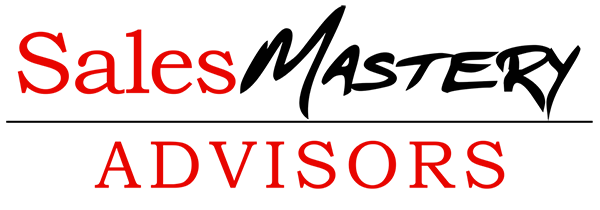The Rise of Virtual Selling and the Implications for Sales Enablement
by Barry Trailer
Nobody needs to be told what a strange, challenging, and difficult year 2020 turned out to be. At the start of a new decade, everyone had their own version of a “bright new day,” on New Year’s Eve 2019. Indeed, the year was off to a great start; the stock market was going crazy, unemployment was at an all-time low, and it was a great time—maybe even the best time—to be a recent graduate embarking on a new career.
The first Covid-19 death in the U.S. would not be reported for another 8 weeks and, even when it was, no one could have predicted what would follow. The anniversary of that news passed a few weeks ago (Feb 29, 2021), with unemployment at levels not seen since the Great Depression, and more Americans lost than in World War II, the Korean War, and Viet Nam. Progress made over the past 30 years in economic and gender equality was totally wiped out in one year.
“Three Weeks to the Gallon”
To say the least, it was a year of change. Everything got weird.
Business ground to a halt. Nobody dropped in to see customers because everyone was at home and flying was out of the question. A sales leader told me, for the first time in 30 years, he turned in an expense report with ZERO mileage. The joke became, “I’m getting three weeks to the gallon.” Except it was no joke.
And then, at least for most, the world continued to turn, and life began to move on. The travel and hospitality industries got crushed but hi-tech did pretty well. Zoom and Netflix did AWESOME!
Thousands of small businesses with little/no cushion and ongoing overhead went under. But the Internet that we’d come to rely on over the past 30 years suddenly was everything. How you ordered food, visited not only distant customers but those that were proximate. If selling was tough pre-Covid, it is now more challenged during Covid. But, hey, sellers are nothing, if not resilient and innovative.
The handshake, Willy Loman’s stock in trade, is now a thing of the past. Will it one day return? Maybe, but not anytime soon. It’s been replaced by elbow bumps and, more often, “Admit” buttons to Zoom sessions. The good news: not having to commute an hour-plus each way to the office. The bad news: doing sales calls at the dinner table with your kids also virtually attending school.
Time for Sales Introverts to Shine
Sales leaders and managers need to not only look after their customers’ business indicators but also look after their sellers’ mental health indicators. Empathy has become essential and asking, “How you doin’?” is often followed with, “No, really, how ARE you doing?” And, “What can we do to help you? What do you need?”
Sales has always been populated — popular images dominated — by extroverts. The hail individual, hardy, and well met. The person who lit up the room and the Road Warrior able to easily navigate airports and distant cities. These outgoing reps are now largely suffering at home, day after day, month after month, trying to do what they have always done, run the trap lines, see customers, meet new prospects. Only they, too, must now do so remotely, at arm’s length, or much further.
At the same time, another population, often overlooked and always understated, is excelling. Introverts who would like nothing more than to stay home, stay in, stay away, are finding this new Covid world much to their liking. Not having to lie about why they can’t join the gang for beers at the end of the day, they simply shut down their CRM and open up their Prime or Netflix favorites.
Virtual Selling Hits and Misses
Still, there is a job to do, the ever-present number to make, and more importantly, customer/prospect needs to identify and address. Time to adapt, adjust and overcome. Time to upskill. How’s it going? No, really, how IS it going?
Korn Ferry (KF) asked this very question in their recent Virtual Selling survey (responses from 500+ firms gathered 9/15/20-10/21/20). Not surprisingly, sellers and their managers had different views of how effectively virtual calls were being conducted; how effectively virtual tools were being used (see charts below).
Sellers were twice as likely as their managers to agree/strongly agree they were effective in both selling virtually and utilizing virtual tools, and half as likely to disagree/strongly disagree. The neutral ratings were almost equal on virtual selling effectiveness, though not so aligned in use of tools.
The tiebreaker won’t be known for several weeks, as KF asks the same question of buyers in their 2nd annual B2B Buyer Survey (open 2/15/21-3/15/21). However, without waiting for this jury to come in, it is clear there is room for both interpretation and intervention. Enter Sales Enablement.
Digital Transformation has been a catchphrase for at least the past two years and an anticipated, if not planned, shift (read: pivot) over the coming 2-3 years. These “plans” were not only accelerated, they were also annihilated. Road warriors may have suffered from not being out and about but this cohort, more easily than almost any other group, shifted from utilizing mobile hot spots and hotel networks, to logging in to their home Internet connection.
Suddenly, everyone needed to be signing in remotely. IT heads and departments scrambled to get homebound workers laptops and VPNs like crazy! Zoom gave everyone free licenses for 30-minute sessions. (This created its own problem when hackers started entering meetings uninvited and unwanted. Zoom has subsequently beefed up its session sign-on security.)
But just as CRM has enthusiastic adopters, skeptics and cynics, virtual selling tools face the same audience. Introverts love them; extroverts can’t wait for life to get back to “normal.” Will we return to the way things were when we celebrated New Year’s Day 2020? With respect to how buyers and sellers interact, it seems unlikely. Below are sellers’ perception of the permanence of Covid-induced changes and how they feel their buyers perceive these changes are nearly the same (see comparison below).
98% of survey respondents feel at least some changes, primarily more virtual meetings, will remain in place in the future. And, one-half believe many/most of changes to virtual will be permanent. Again, it will be interesting to see what buyers report in KF’s Buyer Survey.
Implications for Sales Enablement
However, this much seems clear: change has occurred and is likely to remain. At a minimum, sellers, their managers, and their Sales Enablement leaders should develop objective and validated data on how effectively, empathetically, and efficiently they are being in a virtual sales setting.
You may want to record a few of these calls and review them with team members as a group. You can literally see body language and stop the recording to solicit impressions, feedback, and suggestions on what could be done differently, and what was done effectively to repeat.
One company, again pre-Covid, used virtual sessions conducted from Australia to establish a foothold in China. They practiced presenting and facilitating online sessions. The participants would be in different rooms (today, in their individual homes), to create a more realistic simulation. If you’d like an example of this, download our case study.
Once CFOs see how much they’re saving on real estate, entertainment, and travel expenses, it’s entirely likely new policies will promulgate fostering work from home (WFH), hoteling desk spaces, and limiting entertainment and travel. This will put extra pressure on sellers to not only upskill their virtual meeting skills, but it will also require they do a better job of networking and staying in touch virtually.
This will also create new leadership opportunities for creativity and innovation. As noted above, job losses have fallen disproportionately against women and people of color. CFOs may envision increased ROI, but leaders of vision will also be looking for DEI (Diversity, Equity, Inclusion). With DEI as a component of leadership—not just HR—thinking, there are openings for new ways to work.
Social Selling Skills a Must
Yes, the future will bring more WFH, but also job sharing, part-time roles that include benefits, and full-time jobs with provisions for childcare. More flexible hours would allow workers to assist with kids attending school virtually, a new complication for younger parents. This type of creative thinking may be harder to implement on a factory floor but, once again, sales can lead the charge and spearhead not only new ways of creating and taking care of customers, but also taking care of employees. “No, really, how ARE you doing?” And, “What can we do to help you? What do you need?”
No longer will sellers be able to use the line, “I’ll be in your area next week,” or, “My [fill in the blank] (Vice President, SME, Sales Manager, etc.) will be in next week.” Sellers will be visiting less and buyers will be willing to see them less. What to do?
Content has been and will remain king. Sending relevant articles, invitations to webinars, postings on LinkedIn, and other social platforms to be visible and build both company and individual brands, will take on new importance and urgency.
The goal remains, establishing and elevating relationships. The objective is establishing and maintaining top of mind awareness.
Nurturing prospects/contacts won’t just be the BDRs’ job. Sellers at every level will find the need to build up social selling skills. Ironically, all the hype about social selling a few years ago has quieted in the past year, just when the need for, and reliance upon, these skills has elevated. Don’t be caught napping, or thinking things just need to get back to the way they were before Covid. It’s a new day, a new world, and a new set of skills required to do the same old thing: do the hard work of selling.
Conclusion
If you worked for Princess Cruises, Covid and its changes were bad. If you work for Zoom (stock price up 325%), Covid has been good. Change is not good or bad, it’s neutral. If anything, it’s indifferent. It’s change. How you are positioned relative to the change that’s occurring is what makes it feel good or bad.
It’s time to take inventory. The two dimensions of change to evaluate are your position relative to the change and its significance. Not having virtual selling tools and/or not being skilled in their use will increasingly be career limiting.
Similarly, trying to return to “normal,” the way things operated pre-Covid will be to your disadvantage. Trying out new ways of working, organizing, teaming, and, yes, diversifying, will be your advantage in a “new normal” and post-Covid world.
Improving the customer’s buying experience and continuing to evolve to deliver this, as ever, will be the seller’s challenge.


